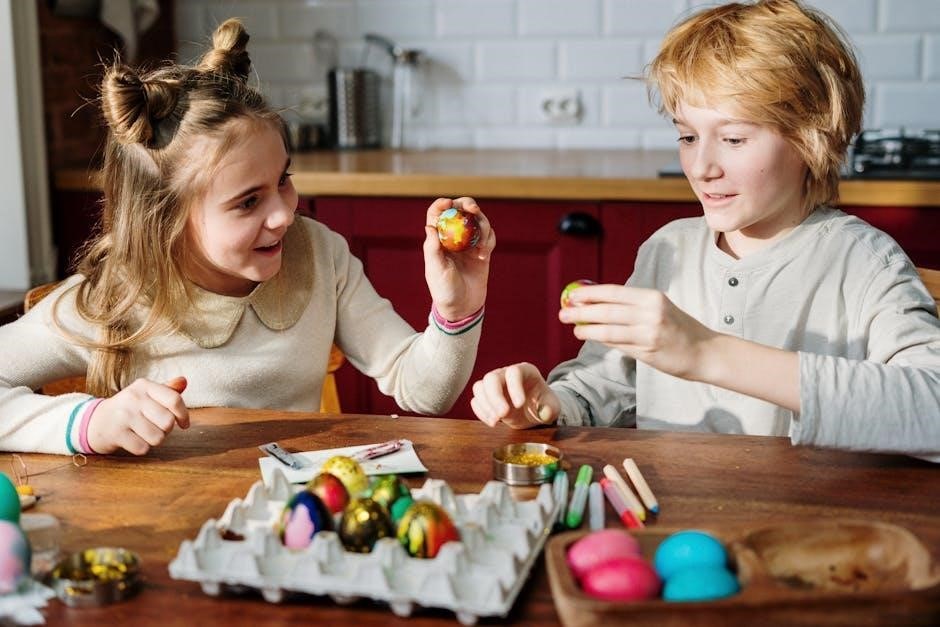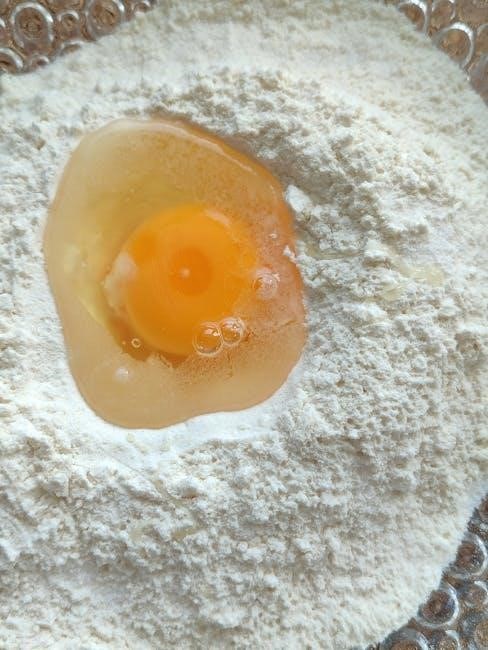trauma egg pdf

Trauma Egg: A Comprehensive Guide
The Trauma Egg, developed by Marilyn Murray, serves as a visual tool. It aids individuals in processing emotional trauma. This method helps identify recurring themes and facilitates healing. It offers a unique way to understand traumatic experiences.
What is a Trauma Egg?
The Trauma Egg is a visual and therapeutic tool, conceived by Marilyn Murray as part of The Murray Method. It’s designed to help individuals process emotional trauma and gain a deeper understanding of its impact. Think of it as a chronological map of significant life events, particularly those that were painful, disappointing, or abusive.
This exercise involves creating a visual representation, usually on a large piece of paper, where individuals record key moments from birth to the present. The aim is to inventory emotionally traumatic experiences, allowing for the identification of recurring themes and patterns. By documenting events involving betrayal, disappointment, or abuse, the Trauma Egg offers a tangible way to examine the chronology of trauma and resonate with life’s experiences.
It’s a useful approach for processing various levels of trauma, from hurtful childhood incidents to major traumatic events. The Trauma Egg serves as a powerful tool for understanding the impact of these experiences and facilitating healing.
Purpose of the Trauma Egg
The Trauma Egg serves multiple crucial purposes in the journey of healing from emotional trauma. Primarily, it functions as a tool for processing and understanding the impact of traumatic experiences. By creating a visual representation of life events, individuals can gain clarity on how these events have shaped their lives.
One of the core aims is to facilitate the identification of recurring themes and patterns. Often, traumatic experiences share underlying similarities or trigger similar emotional responses. The Trauma Egg allows individuals to recognize these connections, fostering a deeper self-awareness. Furthermore, it helps individuals connect past experiences with their present emotions and behaviors, enabling them to understand the root causes of their struggles.
Moreover, the Trauma Egg provides a structured framework for exploring difficult emotions and memories. It creates a safe space to confront painful events, promoting emotional release and healing. Ultimately, the purpose is to empower individuals to take control of their narrative, fostering resilience and promoting long-term well-being. It offers a pathway toward understanding and recovery.

The Murray Method and the Trauma Egg
The Trauma Egg is integral to the Murray Method, a framework designed by Marilyn Murray. It helps treat emotional trauma by visually connecting clients to painful events, facilitating understanding and the healing process overall.
Marilyn Murray’s Contribution
Marilyn Murray, a psychotherapist, developed the Trauma Egg as a tool for processing emotional trauma. Her work focuses on helping individuals understand and heal from painful experiences. Murray’s method emphasizes creating a visual representation of life events. This representation highlights significant moments, especially those involving disappointment, betrayal, or abuse.
The Trauma Egg exercise, part of the broader Murray Method, encourages individuals to take an inventory of emotionally traumatic events throughout their lives. By charting these experiences, clients can identify recurring themes and patterns. This process aids in recognizing the impact of trauma on their present-day lives. Murray’s approach integrates various therapeutic modalities to provide comprehensive care.
Her person-centered approach utilizes tools like the Trauma Egg to facilitate healing. Murray’s contribution lies in providing a structured yet flexible way for individuals to explore their emotional landscapes. This exploration promotes self-awareness and resilience in the face of past traumas.
The Trauma Egg as Part of the Murray Method
The Trauma Egg is a central component of the Murray Method, a therapeutic approach designed to treat emotional trauma. Developed by Marilyn Murray, this method utilizes the Trauma Egg as a visual aid; It helps clients connect with and process difficult experiences from their past. As a key exercise within the Murray Method, creating a Trauma Egg allows individuals to chronologically record significant life events.

This process facilitates the examination of common themes and patterns that resonate throughout their lives. By visually representing their history, individuals gain a clearer understanding of how past traumas impact their present. The Murray Method emphasizes the importance of taking an inventory of emotionally painful events. This inventory includes experiences of disappointment, betrayal, and abuse.
The Trauma Egg serves as a foundation for deeper exploration and healing. It is a practical tool that promotes self-awareness and empowers clients to navigate their emotional landscapes. Ultimately, it supports integration and resilience.

How to Create a Trauma Egg

Creating a Trauma Egg involves gathering materials and following step-by-step instructions. This allows individuals to visually represent their life and focus on significant events, from birth to the present, to facilitate healing.
Materials Needed
To embark on the journey of creating a Trauma Egg, gathering the right materials is paramount. You will need a large piece of newsprint, ideally 24 x 36 inches, which can be found in tablet form at any office supply store. This provides ample space for a comprehensive visual representation.
Additionally, acquire an assortment of colored markers, pencils, or crayons. These will be used to denote different emotions, events, or periods in your life. Having a variety of colors allows for nuanced expression and differentiation.
Prepare a comfortable and quiet workspace, free from distractions. This will allow you to focus on the task at hand and delve into your memories with minimal interruption. Ensure adequate lighting to enhance visibility and prevent eye strain.
Finally, gather any photographs, mementos, or other items that hold significance to you. These can serve as visual prompts and reminders of key events in your life, enriching the process of creating your Trauma Egg and connecting with your past.
Step-by-Step Instructions
Begin by drawing a large egg shape on your newsprint. This egg represents your life, from birth to the present. Divide the egg into sections, each representing a period or phase of your life. These sections don’t need to be equal; allocate space according to the significance of each period.
Within each section, record significant events, both positive and negative. Focus on events that evoked strong emotions, such as disappointment, betrayal, or abuse. Use different colors to represent different emotions or types of events. For instance, red could signify anger, blue for sadness, and green for positive experiences.
As you fill in the egg, reflect on the impact of each event on your life. Note any recurring themes or patterns that emerge. Are there certain types of relationships or situations that consistently lead to negative outcomes? This step is crucial for identifying core issues.
Finally, review your completed Trauma Egg. Take time to process the information and emotions it contains. Consider discussing your Trauma Egg with a therapist or counselor to gain further insights and develop coping strategies. Remember, this is a tool for understanding, not reliving, trauma.

Benefits of Using a Trauma Egg
Using a Trauma Egg helps process emotional trauma. It provides a visual representation of life events. This aids in identifying recurring themes and patterns. It promotes understanding and facilitates the healing process.
Processing Emotional Trauma
The Trauma Egg is a valuable tool in processing emotional trauma, offering individuals a tangible way to explore and understand painful experiences. By visually mapping out significant life events, particularly those marked by disappointment, betrayal, or abuse, individuals can begin to identify patterns and connections that may have been previously hidden.

This process allows for a deeper understanding of the impact these events have had on their lives, fostering a sense of self-awareness and validation. The Trauma Egg provides a safe space to confront difficult emotions and memories, promoting emotional regulation and resilience.

Furthermore, by externalizing the trauma through a visual representation, individuals can gain a sense of distance from the events, allowing them to process the emotions without feeling overwhelmed. This can lead to increased self-compassion and a greater capacity for healing. The act of creating the Trauma Egg itself can be empowering, giving individuals a sense of control over their narrative and fostering a proactive approach to healing.
Identifying Recurring Themes
One of the key benefits of using a Trauma Egg is its ability to help individuals identify recurring themes in their lives. By mapping out significant events, particularly those that were painful or difficult, individuals can begin to see patterns and connections that may not have been apparent before.
These recurring themes might involve specific types of relationships, repeated experiences of loss or betrayal, or consistent patterns of self-sabotage. Recognizing these themes is crucial for understanding the underlying issues that contribute to emotional distress and unhealthy coping mechanisms.
The visual nature of the Trauma Egg makes it easier to spot these patterns, as the events are laid out in a chronological order, allowing for a clear overview of one’s life history. This process can be particularly helpful in identifying the root causes of current challenges and developing strategies for breaking free from negative cycles. By gaining insight into these recurring themes, individuals can begin to make conscious choices that promote healing and well-being.

Therapeutic Approaches Utilizing the Trauma Egg
The Trauma Egg can be integrated into various therapeutic approaches. It complements modalities like CBT and TFCBT. It also works well with a person-centered approach. This allows for flexible application in trauma treatment.
Integration with CBT and TFCBT
The Trauma Egg, as a therapeutic tool, can be seamlessly integrated with Cognitive Behavioral Therapy (CBT) and Trauma-Focused Cognitive Behavioral Therapy (TFCBT). This integration allows therapists to leverage the visual representation of trauma provided by the egg to enhance the effectiveness of these established therapeutic approaches.
In CBT, the Trauma Egg can aid in identifying negative thought patterns and cognitive distortions related to specific traumatic events. By visually mapping out these events, clients can gain a clearer understanding of how their thoughts, feelings, and behaviors are interconnected. This awareness can then be used to challenge and modify maladaptive thought patterns, leading to improved emotional regulation and coping skills.

When combined with TFCBT, the Trauma Egg provides a structured framework for processing traumatic memories. The egg can serve as a timeline, helping clients to gradually expose themselves to traumatic experiences in a safe and controlled environment. This exposure, coupled with cognitive restructuring and coping skills training, can help to reduce trauma-related symptoms such as anxiety, depression, and PTSD. The visual nature of the Trauma Egg can also be particularly helpful for children and adolescents who may struggle to verbalize their experiences.
Person-Centered Approach
The Trauma Egg aligns well with the principles of a person-centered approach, emphasizing empathy, unconditional positive regard, and genuineness in the therapeutic relationship. In this context, the Trauma Egg becomes a collaborative tool, empowering clients to explore their experiences at their own pace and in their own way. The therapist acts as a facilitator, providing support and guidance without imposing their own interpretations or judgments.
By creating their Trauma Egg, individuals gain a sense of ownership over their narrative, allowing them to identify patterns and connections that may have previously been unconscious. The therapist’s role is to listen attentively and reflect back the client’s understanding, fostering self-awareness and promoting healing. The emphasis is on the client’s subjective experience, validating their feelings and empowering them to make choices that align with their values and goals.
The Trauma Egg, within a person-centered framework, supports the client’s inherent capacity for growth and self-actualization. It provides a safe and non-judgmental space for exploring difficult emotions and experiences, fostering a sense of empowerment and resilience.